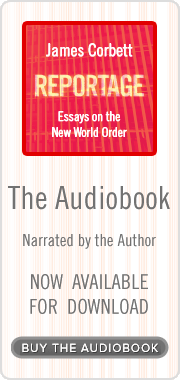[CLICK HERE to continue watching on Boiling Frogs Post.]
by James Corbett
BoilingFrogsPost.com
28 August, 2012
Formalized under the so-called ANZUS treaty in 1951, the military alliance between Australia and the United States has long defined Australia’s role in the security context of the Asia-Pacific region. Formed in the wake of World War II when memories of Japanese aggression in the Pacific were still fresh in the minds of Australians, it was invoked most prominently during Australia’s commitment of over 60,000 troops in the Vietnam war from 1962 to 1975.
Even given these decades of close cooperation, however, it still took many by surprise when it was announced last year at a joint press conference by US President Obama and Australian Prime Minister Gillard that that alliance was about to be deepened and expanded with the deployment of a permanent US marine presence in Darwin, Australia.
Although surprising to those who keep only a casual eye on the headlines from the region, they come as no surprise to those who have been watching the United States increasingly focusing its attention on the region, and even openly declaring the Asia-Pacific as one of the two main anticipated areas of operation for American armed forces in the coming decades.
The reason for this sudden shift in attention to America’s western flank is obvious: China’s precipitous rise in the past two decades as a both an increasing economic and military power is seen as a direct threat to American interests in the region. In this context, the marine deployment in Darwin and the growing US interest in locating naval bases and air bases for unmanned aerial vehicles in and around Australia’s shores are almost universally read as an overt warning to Beijing, and a step to counter China’s recent naval aggressions in the South China Sea. This aspect of the recent marine deployment did not go unnoticed by political commentators on the region.
As if to reinforce these points, within months of the first company of US marines arriving in Darwin, they began participating in joint training with the Malaysian, Thai and Indonesian militaries.
This growing trend toward militarization of the Asia-Pacific has been reflected in a number of stories from the region over the past several months.
Earlier this week, Australian Foreign Minister Bob Carr had to issue a formal denial that the US was seeking a permanent military base in Australia in the face of persistent and widespread speculation to the contrary.
Also in the past weeks, the US had to issue its own denial that its recently-unveiled plans to expand the missile defense capabilities of its radar facilities in southern Japan were in fact aimed at China. Despite the fact that the upgraded X-Band early warning radar is well outside of the range of Pyongyang’s military capability, the US State Department issued a formal statement last week that the missile defenses were in fact aimed at North Korea, not Beijing.
The Indian Ocean has likewise come under increasing scrutiny after the crash of an MQ-9 reaper drone in the Seychelles last year forced the Pentagon to admit what many had long surmised: that the US had a drone base on the island and was using it as a staging base for operations in East Africa, including Yemen and Somalia.
As this activity continues to increase, Australia looks set to become an increasingly important strategic ally of American interest in the Asia-Pacific. If so, all indications so far seem to suggest that the Australian government will be only too happy to cooperate with Washington on achieving its security goals, as it has been for the past 61 years under the ANZUS treaty.
Last week I had the chance to talk to Broc West, an Australian blogger who is keeping an eye on developments in the region at his website “Asia-Pacific Perspective”, about these developments, and how the Australian people are responding to this new militarization of their neighbourhood.
It is far too early to say what form the conflicts and battles of the 21st century will take, but that many of them will take place in the Asia-Pacific region seems an increasing likelihood. Although it is still only a blip on the political radar of many Australians, they are likely to find themselves in the coming years in an increasingly precarious position as their political leaders plunge them into an ever deepening relationship with the Pentagon. Right now, it remains a question if the Australian people will take this responsibility seriously and begin pushing back against this growing militarization of the region, or if Canberra and Washington will be allowed to continue expanding their military cooperation unimpeded and push the world one step closer to outright confrontation with China.








0 Comments
Trackbacks/Pingbacks